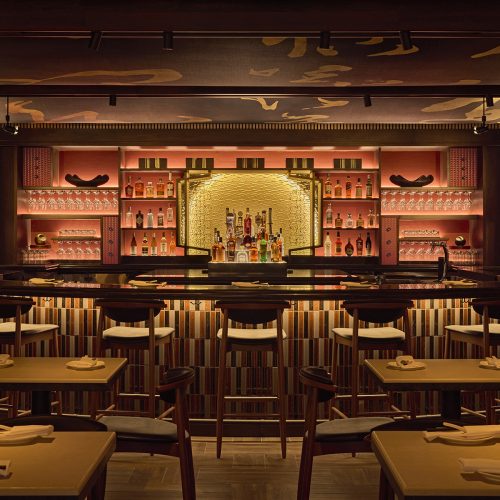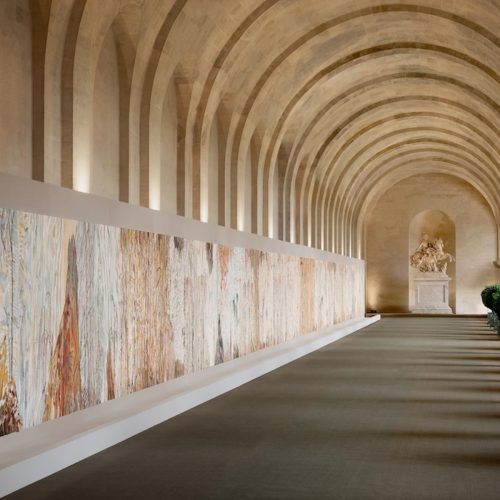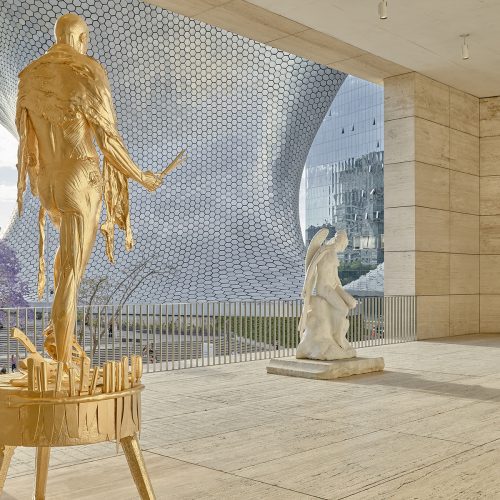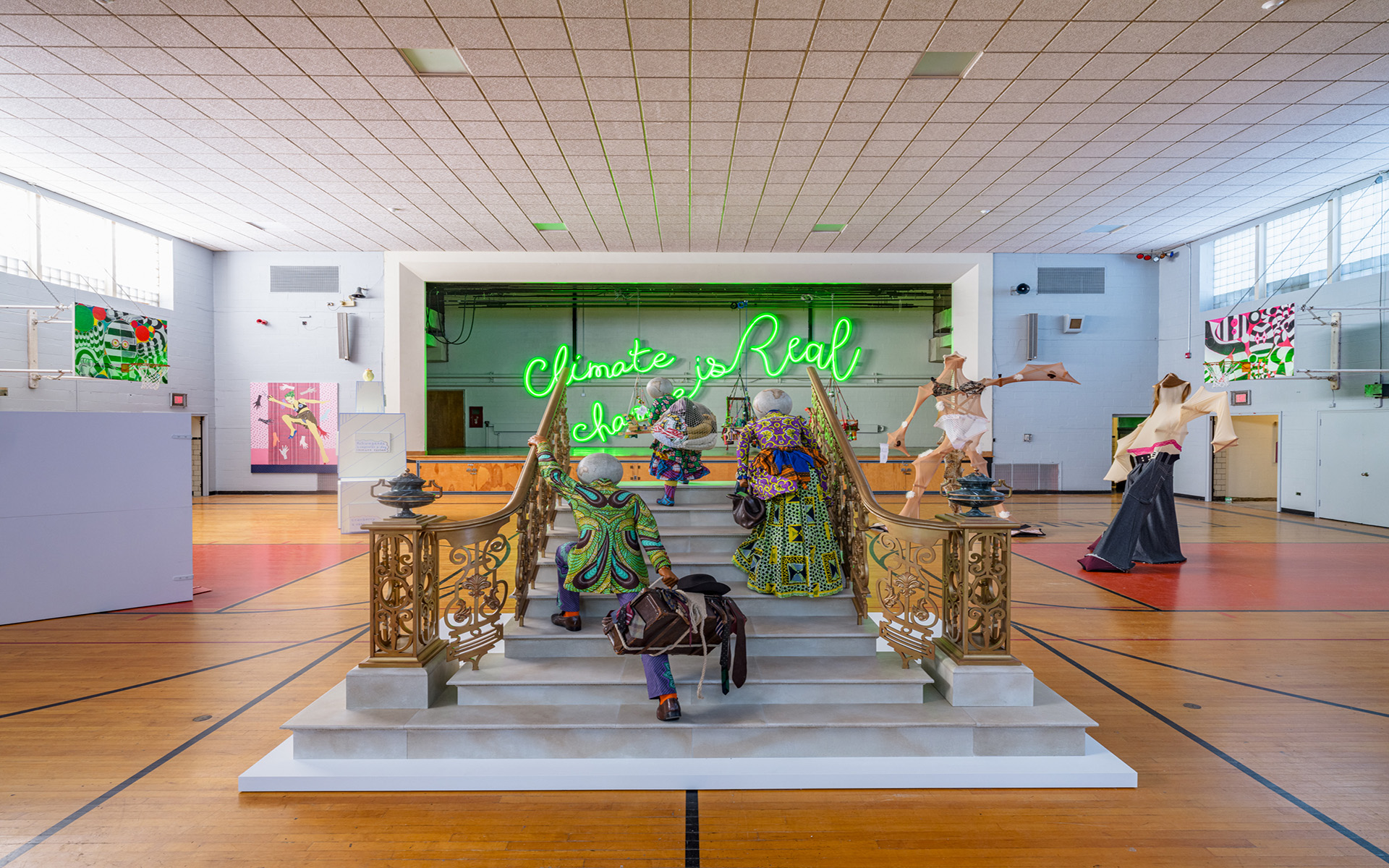

6 Standout Shows to See During Upstate Art Weekend
From a vacant public school to an open-air museum, here's a list of must-see exhibitions to visit at their unique temporary New York locations
Celebrating the cultural dynamism of Upstate New York, Upstate Art Weekend returns for its fifth edition from July 18 to 21 with 146 participating arts organizations, galleries, museums, residencies, temporary exhibitions, and specially staged events spanning 10 counties on both sides of the Hudson River in the Catskills Mountains and Hudson Valley.
Rounding up this year’s exhibition picks, Galerie has selected six standout shows that should be on everyone’s list. From Nina Chanel Abney’s colorful paintings and sculptures tackling current social concerns at The School in Kinderhook, and the takeover of another abandoned educational institution by six NYC galleries at The Campus in Hudson, to a focused exhibition of works by famed Arte Povera artist Michelangelo Pistoletto from the collection at Magazzino Italian Art in Cold Spring, these are standout Upstate shows.
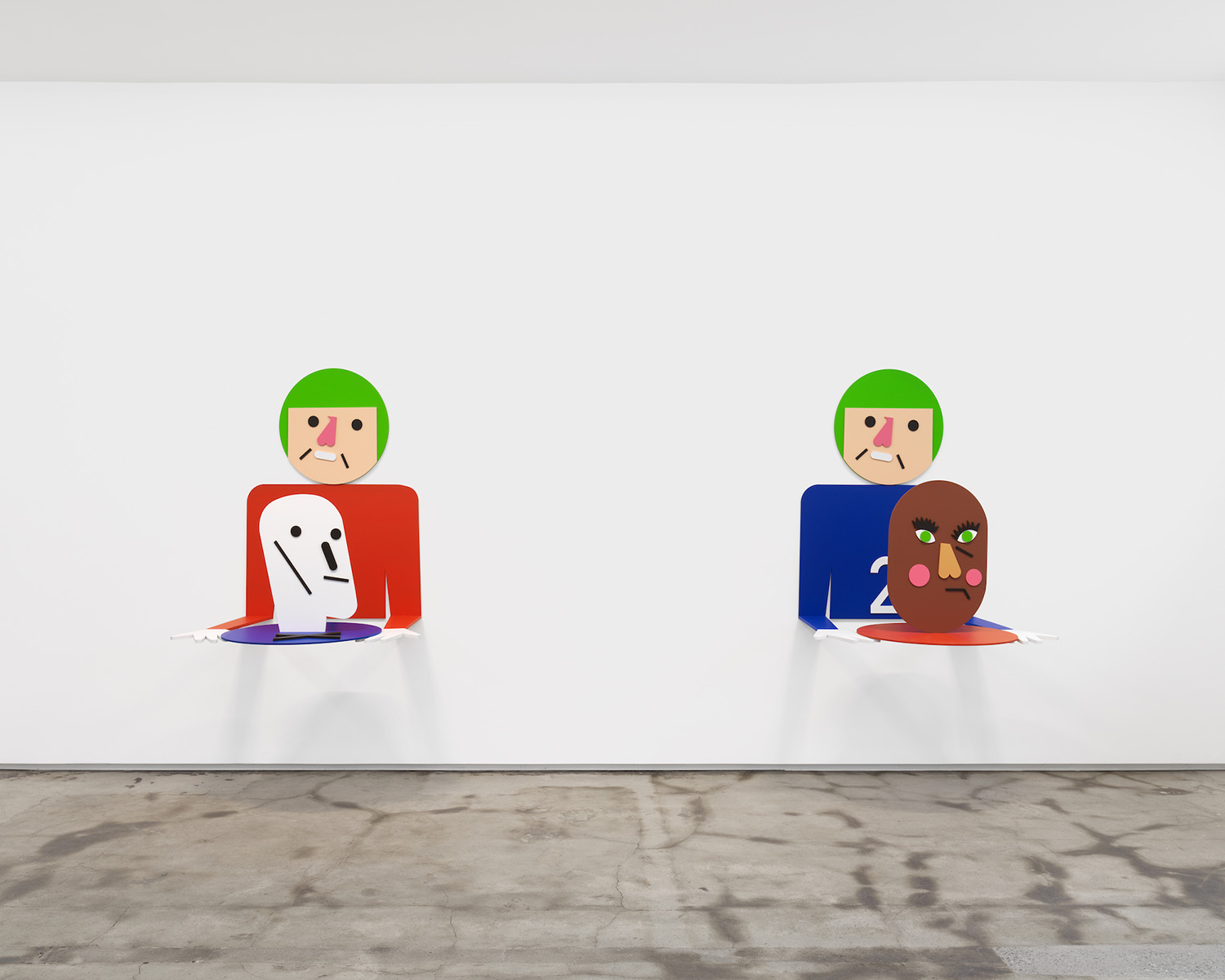
Nina Chanel Abney, Pig Out 1, 2024, and Pig Out 2, 2024. Painted aluminum, 48 1/4 x 47 x 45 1/4 inches (each). Edition 1 of 3, with 1 AP. Photo: Photo: Dan Bradica Studio. Courtesy of Nina Chanel Abney and Jack Shainman Gallery.
1. Nina Chanel Abney: LIE DOGGO at The School, Kinderhook
Newly named as one of the contemporary artists selected to create public art for John F. Kennedy International Airport’s new Terminal 6, scheduled to open in 2026, Nina Chanel Abney has been on a roll ever since her work was featured in the critically acclaimed group exhibition “30 Americans” at the Rubell Family Collection in Miami in 2008, when she was just two years out of college.
Returning to Jack Shainman Gallery for her third one-person exhibition and her first solo at The School, the gallery’s massive space Upstate, Abney’s museum-quality show spans her creative practice. It assembles a new series of paintings with collages, site-specific murals, an immersive digital art installation, and the debut of a new body of large-scale sculpture in a dynamic presentation.
Blurring the boundary between figuration and abstraction, Abney’s works capture the chaotic pace of contemporary culture. Tackling subjects as diverse as race, celebrity, religion, politics, sex, and art history, her works avoid linear storytelling in lieu of disjointed narratives. The result is information overload, balanced with a spur-of-the-moment order, where time and space are condensed and identity is interchangeable.
Through November 16
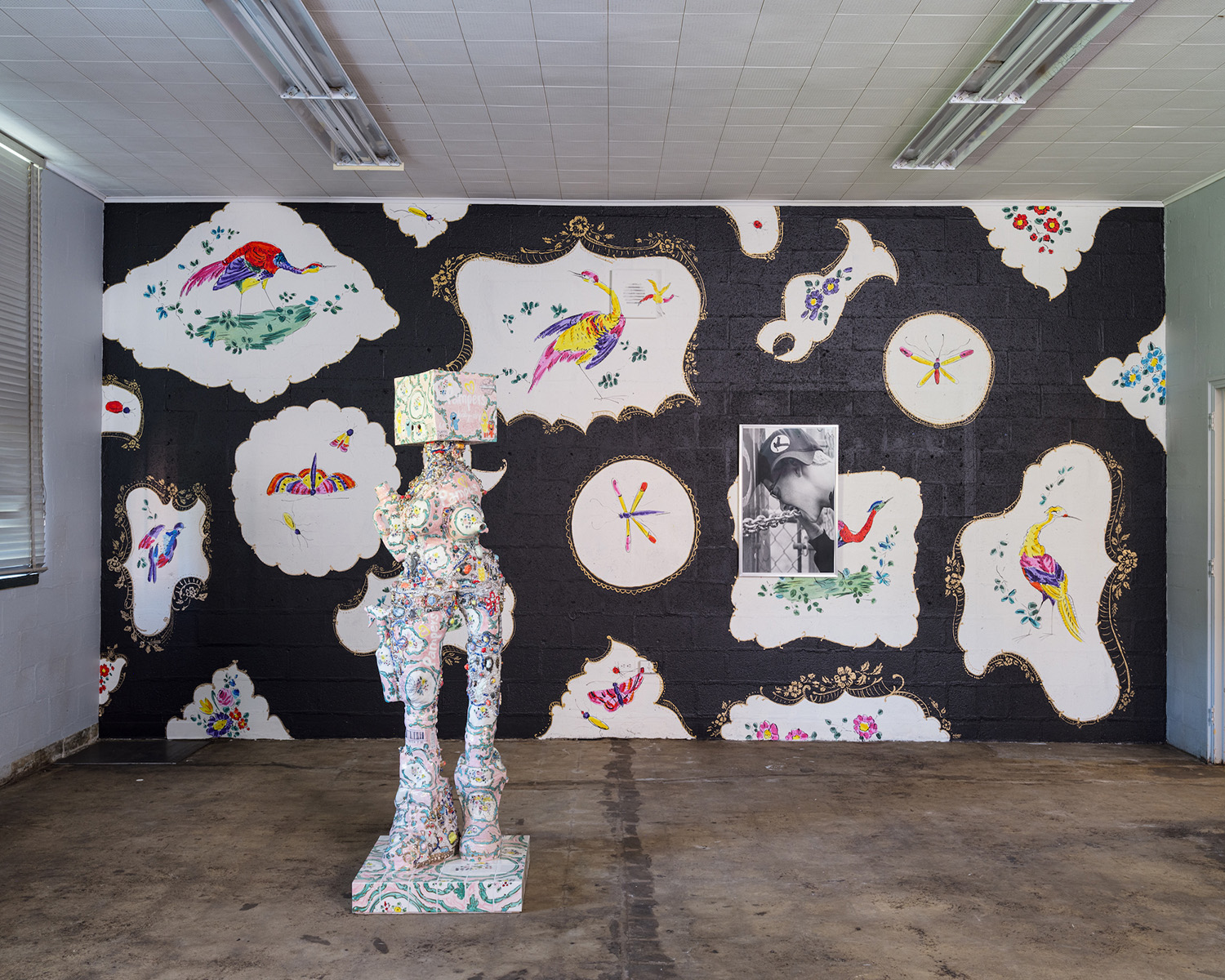
Inaugural Exhibition, organized by Timo Kappeller, The Campus. Photo: Photo by Yael Eban & Matthew Gamber. Courtesy The Campus.
2. Inaugural Exhibition at The Campus, Hudson
Another creative conversion of a vacant public school, The Campus, brings together six contemporary art galleries with spaces in New York City in collaboration with its expansive exhibition site slightly outside Hudson. Largely unrenovated, 40 rooms of the 78,000-square-foot 1951 building have been imaginatively repurposed as exhibition spaces for a gigantic group show with works from the six partnering galleries: Bortolami, James Cohan, kaufmann repetto, Anton Kern, Andrew Kreps, and kurimanzutto.
Organized by former Hauser & Wirth director Timo Kappeller, the inaugural exhibition features new, historical, and site-specific works in various media by over 80 artists. Displayed in the abandoned classrooms, gymnasium, hallways, and on the surrounding grounds, highlights include the mingling of Barbara Kasten’s staged photographs and video of colorful, geometrically shaped plastic forms with Nathalie du Pasquier graphic paintings in color-coordinated rooms; Yinka Shonibare’s symbolic sculpture of migrants with their meager possessions ascending a grand staircase; Francesca DiMattio’s imagery of nature decorating baroque murals and ceramic sculptures paired with Talia Chetrit’s psychologically edgy photographic portraits; and Richard Long’s land art accumulation of natural brownstones in a circular form.
Through October 27
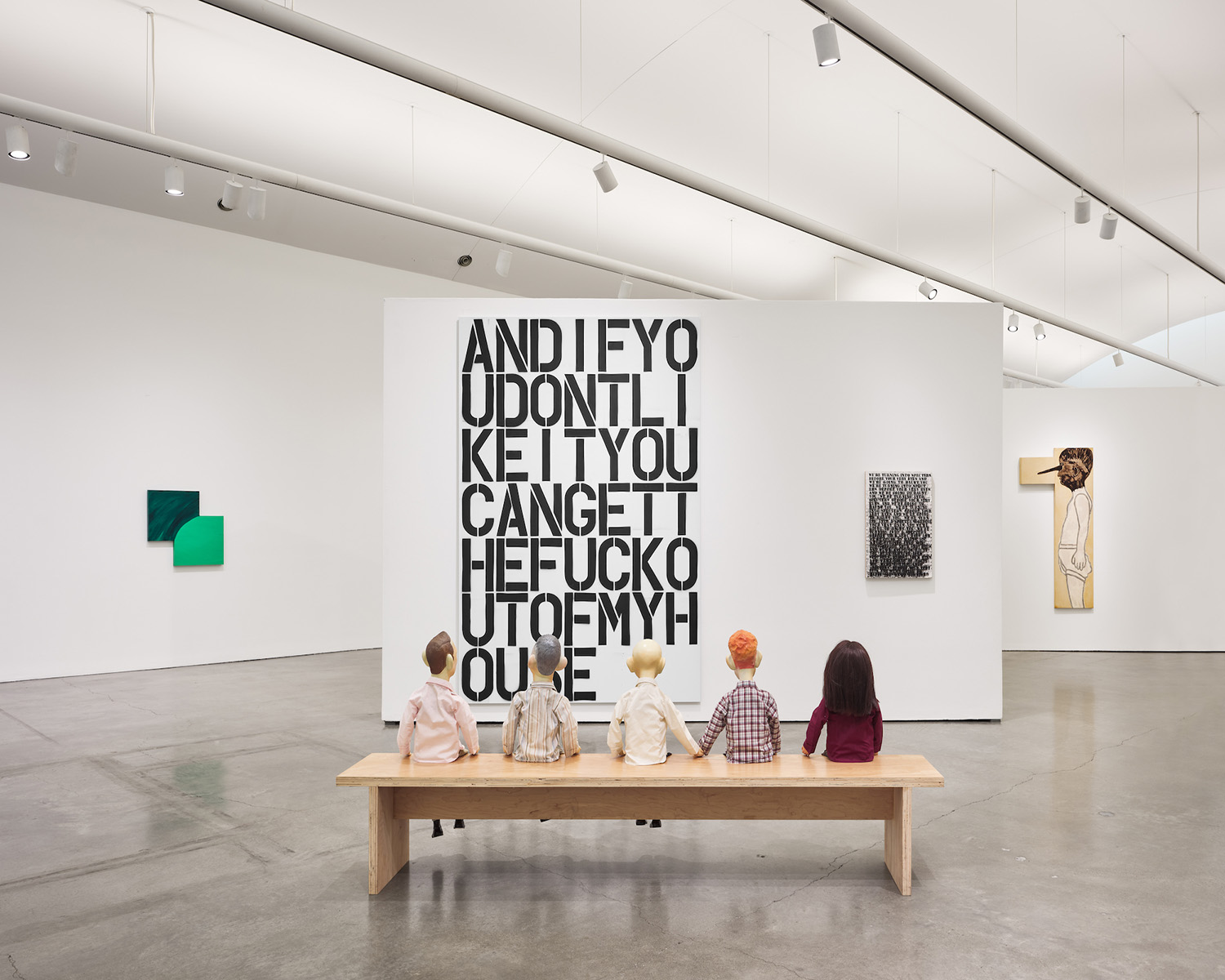
Start Making Sense, Center for Curatorial Studies, Bard College. Photo: Courtesy the Center for Curatorial Studies, Bard College, Hessel Museum of Art.
3. Start Making Sense at Center for Curatorial Studies, Bard College, Annandale-on-Hudson
Drawing upon the Center for Curatorial Studies’ comprehensive archive and special collections, this group exhibition aims to gain insight into how the understanding of contemporary art is shaped by the support of curators, fellow artists, gallerists, and other members of the art community. “Start Making Sense” features work in a range of media by more than 60 artists and collectives, including Mark Dion, Andrea Fraser, Lyle Ashton Harris, Mary Heilmann, Chris Ofili, Catherine Opie, Isaac Julien, Laura Owens, Rirkrit Tiravanija, Takashi Murakami, Franz West, and Christopher Wool, among others.
Focusing on the New York City art scene, the exhibition features works from the 1990s and early 2000s to identify moments of critical cultural significance and exhibitions during this period that altered how we see art today and whose voices and artworks made that possible. Highlights include a selection of artist’s editions by Tracey Emin, David Hammons, Jeff Koons, Sarah Lucas, and others commissioned for Parkett, a smartly edited magazine that fostered dialogue between the artistic communities of Europe and America; documentation of visionary art dealer Colin de Land’s art courses for collectors held at his downtown gallery, American Fine Arts, Co; and provocative text-based paintings by Glenn Ligon, Rirkrit Tiravanija, and Christopher Wool.
Through October 20
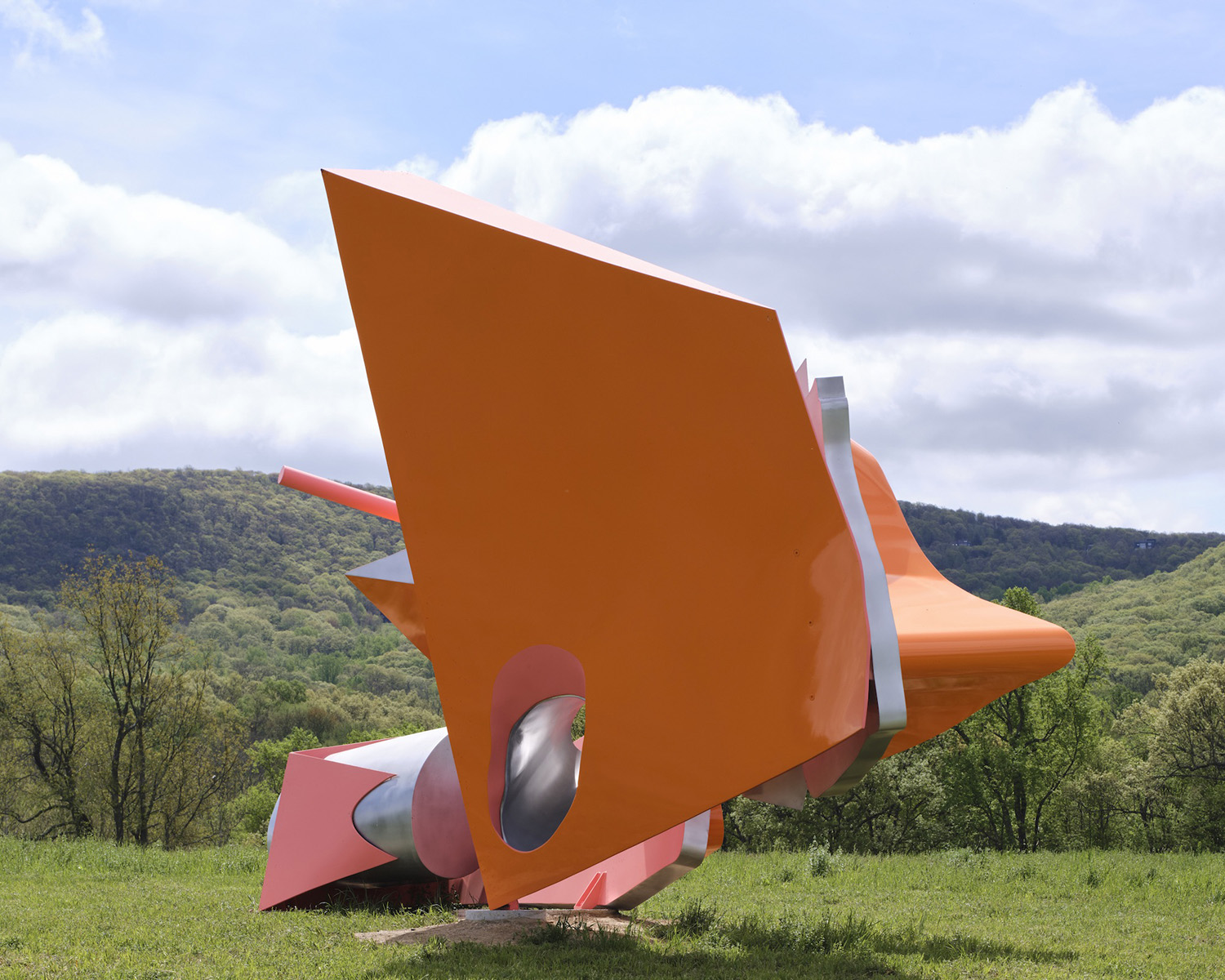
Arlene Shechet, Midnight, 2024. Photo: Photo: David Schulze. Courtesy of the Artist and Pace Gallery.
4. Arlene Shechet: Girl Group at Storm King Art Center, New Windsor
Celebrated for her eye-catching 3D pieces that mix carved and painted wood with ceramics and metalwork, Arlene Shechet has recently elevated her practice to include public art projects. Her presentation at Storm King, which features smaller pieces in its indoor gallery and six new monumental sculptures on its sprawling grounds, beautifully illustrates that transition in its making. The “Girl Group” exhibition offers a fresh, less macho outcome for large-scale, constructed metal sculpture.
The organic shapes and vibrant palette of the indoor sculptures, which are from the artist’s Together series and were made in isolation in the studio during the COVID-19 pandemic, inform the vivid hues and playful forms of the much larger outdoor works. Her sculptures April, Dawn, and Rapunzel flaunt loose and lively forms of painted aluminum and stainless-steel strips that create unexpected positive and negative spaces. Meanwhile, Bea Blue has the boxy, organic shape of a feminine cartoon character walking across a field on the tip-toes, and her salmon and silver-colored Midnight 2 looks like a remote-controlled futuristic aircraft that admired the shape of Shechet’s other sculptures at Storm King and decided to join them.
Through November 10
Meg Webster, Dia Beacon. Photo: Photo: Bill Jacobson Studio. Courtesy Dia Art Foundation.
5. Meg Webster at Dia Beacon, Beacon
Meg Webster, a sculptor and installation artist who makes minimal art with natural materials that the body can directly sense, received her MFA from the Yale School of Art in 1983. This was well past the heyday of minimalism but at the start of a postmodern, neo-conceptual, and environmentalist period in contemporary art, which made her work very much of the moment. Equally influenced by the Land art movement in the 1970s, her works feature a similar focus on the Earth and convergence with nature by incorporating materials such as soil, sand, beeswax, spices, and salt.
The sublime, long-term presentation of her work at Dia is focused on the New York-based artist’s signature concave and convex earthworks, which recently entered the institution’s collection. These works are accompanied by sculptures constructed of beeswax, moss, salt, and sticks—organic materials that are in dialogue with the natural elements of Dia’s outdoor gardens. Exhibited alongside more brutal works by Michael Heizer, Donald Judd, Richard Serra, and other artists, Webster’s works bring a unique environmental perspective to the formal concerns typically found in the art in Dia’s collection.
Ongoing
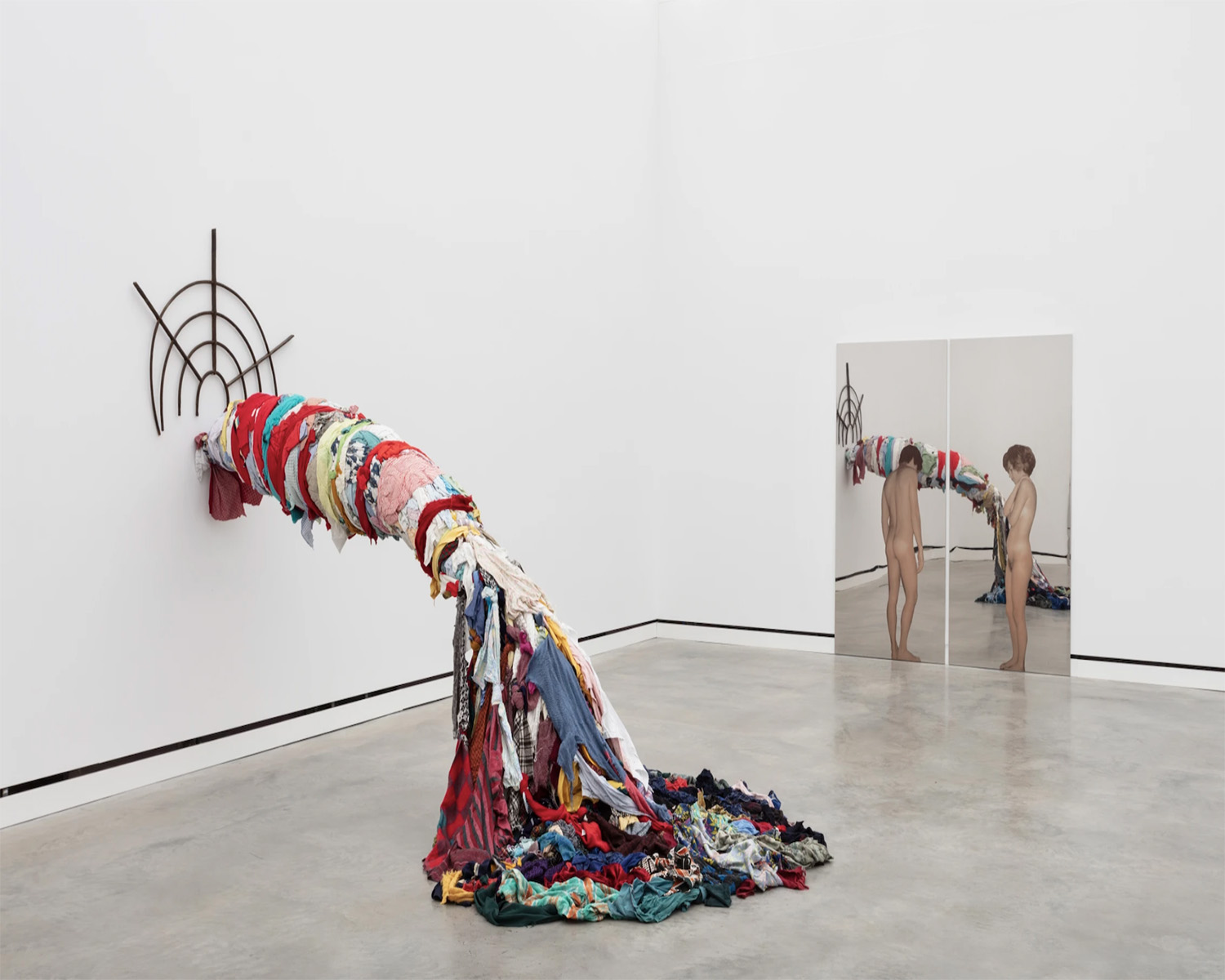
Welcome to New York!, Magazzino Italian Art. Photo: Photo: Marco Anelli/Tommaso Sacconi. Courtesy Magazzino Italian Art.
6. Welcome to New York! at Magazzino Italian Art, Cold Spring
One of the leading artists of the Italian Arte Povera movement of the 1960s and ‘70s, Michelangelo Pistoletto is best known for his marvelous paintings on mirrors, which he first made in 1962 and continues to produce at 91 today. In the later ‘60s, he began assembling rags with casts of classical Italian statues to undo the hierarchies of art and everyday objects.
In this exhibition, Adamo ed Eva, a silkscreen print of a young nude couple on polished stainless steel, and Welcome to New York, an accumulation of cloth rags bursting forth from a gridded iron symbol of the Statue of Liberty’s crown like immigrants flowing though Liberty Island, illustrate both of his signature ways of working.
Other notable pieces in the show from the museum’s Olnick Spanu Collection are a self-portrait of the artist in a mirror holding a notebook as though he was composing thoughts for further artworks; a newspaper-collaged massive sphere from his famous series of Minus Object, representing the infinite possibilities of creation, minus themselves (hence the series’ title); and a gathering of three circles of stones, sited on Magazzino’s grounds, titled Terzo Paradiso (Third Paradise), in the form of an infinity sign created by the artist, in which a third central circle represents the generative womb of a new humanity.
Through August 19

